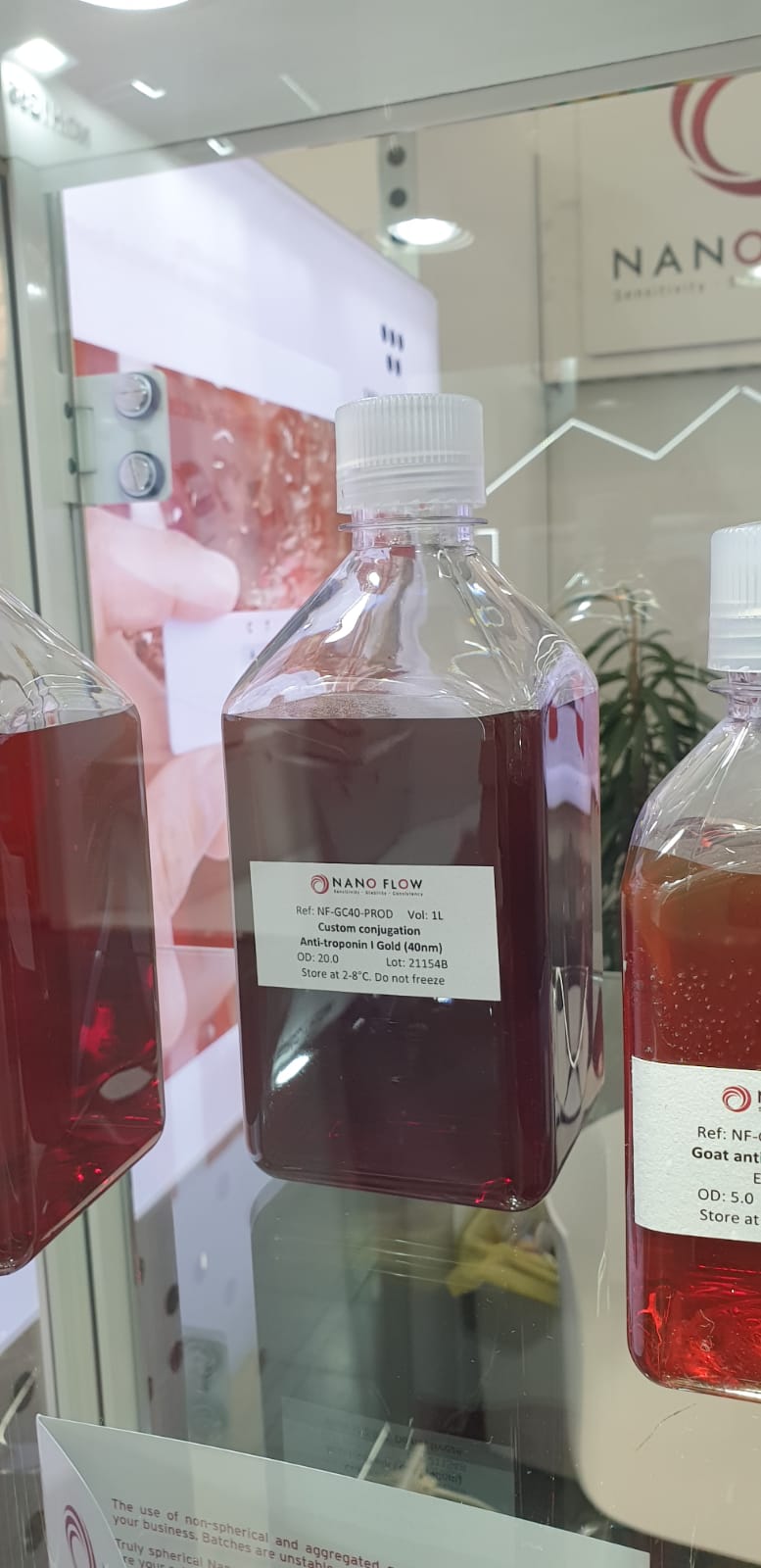Abstract
An easy, rapid and solution phase method to detect human cardiac troponin I have been described to detect myocardial damage using gold nano bar-based biosensors. Detection is demonstrated by the distinctive shift of the longitudinal surface plasmon resonance wavelength of gold nanorods to specific antibody and antigen-binding events. For increased sensitivity, the aspect ratio of the gold nanorods is increased to about 5.5 simply by adding a small amount of HCl in a seed-mediated growth solution. The experimental results show that the detection limit of the present method is 10 ng/ml. Contrast tests reveal that these gold nanorod-based plasmonic biosensors have much higher sensitivity than conventional spherical gold nanoparticles.
Product name
Cardiac anti troponin I antibody
Description
Rabbit polyclonal to Cardiac Troponin I
Host species: Rabbit
Proven Applications
Suitable for: ELISA, WB, ICC/IF, IHC-Fr, Flow Cyt, IHC-P
Species reactivity
- Reacts with: Mouse, Rat, Human, Pig
- Predicted to work with: Chimpanzee
Immunogen
A synthetic peptide corresponding to Human Cardiac Troponin I aa 1-100 conjugated with Californian limpet hemocyanin. (Peptide available as ab47002)
General notes
The Life Sciences industry has been in the grip of a reproducibility crisis for several years. Abcam is leading the way to address this with our range of recombinant monoclonal antibodies and cell lines edited for gold-standard validation. Please verify that this product meets your needs before purchasing.
Properties
Form: Liquid
Storage instructions
Shipped at 4°C. Store at +4°C for the short term (1-2 weeks). At the time of aliquot delivery. Store at -20°C or -80°C. Avoid freeze/thaw cycle.
Storage buffer
- pH: 7.40
- Preservative: 0.02% sodium azide
- Constituent: PBS
Batches of this product with a concentration of < 1 mg/mL may have BSA added as a stabilizing agent. If you would like information on the formulation of a specific batch, please contact our scientific support team who will be happy to assist you.
Concentration: 100 µg to 1 mg/mL
Purity: Affinity purified immunogen
Clonality: polyclonal
Isotype: IgG
Experimental sections
1. Materials
Cetyltrimethylammonium bromide (CTAB, 99%, Cat #: H6269) and poly (styrene sulfonate) (PSS, Mw 70,000) were purchased from Sigma. Hydrogen tetrachloroauric acid (HAuCl4 · 4H2O, 99%), hydrochloric acid (HCl), ribbon nitrate, sodium borohydride (NaBH4, 96%) and L-ascorbic acid (AA) were purchased from Shanghai Chemical Reagent Co. Ltd (China). Millipore quality water (18.18 MΩ / cm) was used throughout the experiments. Human myocardial muscle cTnI and anti-human cTnI monoclonal antibodies used in the experiment were obtained from the Cardiovascular Diseases Research Institute of the First Affiliated Hospital of Nanjing Medical University.
2. Manufacture of monodisperse gold NRs
Gold NRs were manufactured based on a seed-mediated CTAB-assisted growth procedure by Nikoobakht et al. [20] with some modifications. The gold seed solution was first prepared by adding 0.6 ml of an ice-cold solution of 10 mM NaBH4 to 10 ml of 0.25 mM HAuCl4 prepared in 0.1M CTAB solution, with vigorous stirring for 2 min. The yellow colour immediately changed to brown, indicating the formation of gold seeds. These seeds were aged for 2 h to allow hydrolysis of the unreacted NaBH4.
The growth procedure was extended to obtain a 100 ml dispersion of the gold NRs. Briefly, the solutions were added to a 250 ml conical flask, in the following order: 100 mL of 0.1 M CTAB solution, 1.0 mL of 10 mM silver nitrate solution, 2 mL of 25 mM aqueous HAuCl4, and 0.4 mL of 1 M HCl solution. To this was added 0.70 ml of 0.0788 M AA as a reducing agent and the mixture was homogenized with gentle stirring. Finally, 120 μL of seed solution were added and the entire solution was left to stand overnight (14-16 h).
3. PSS coating
Typically 10 ml of gold NR was centrifuged as manufactured at 13,000 g / min for 20 min, the supernatant was discarded and the precipitate was redispersed in 5 ml of Milli-Q water. Subsequently, it was added dropwise to 1 ml of aqueous PSS solution (2.5 mg / L) with vigorous stirring. After adding the PSS solution, the mixture was allowed to stand for 0.5 h. Then, it was centrifuged twice at 12,500 g / min to remove excess polyelectrolyte and dispersed in 5 mL of Tris buffer (pH = 8.2).

